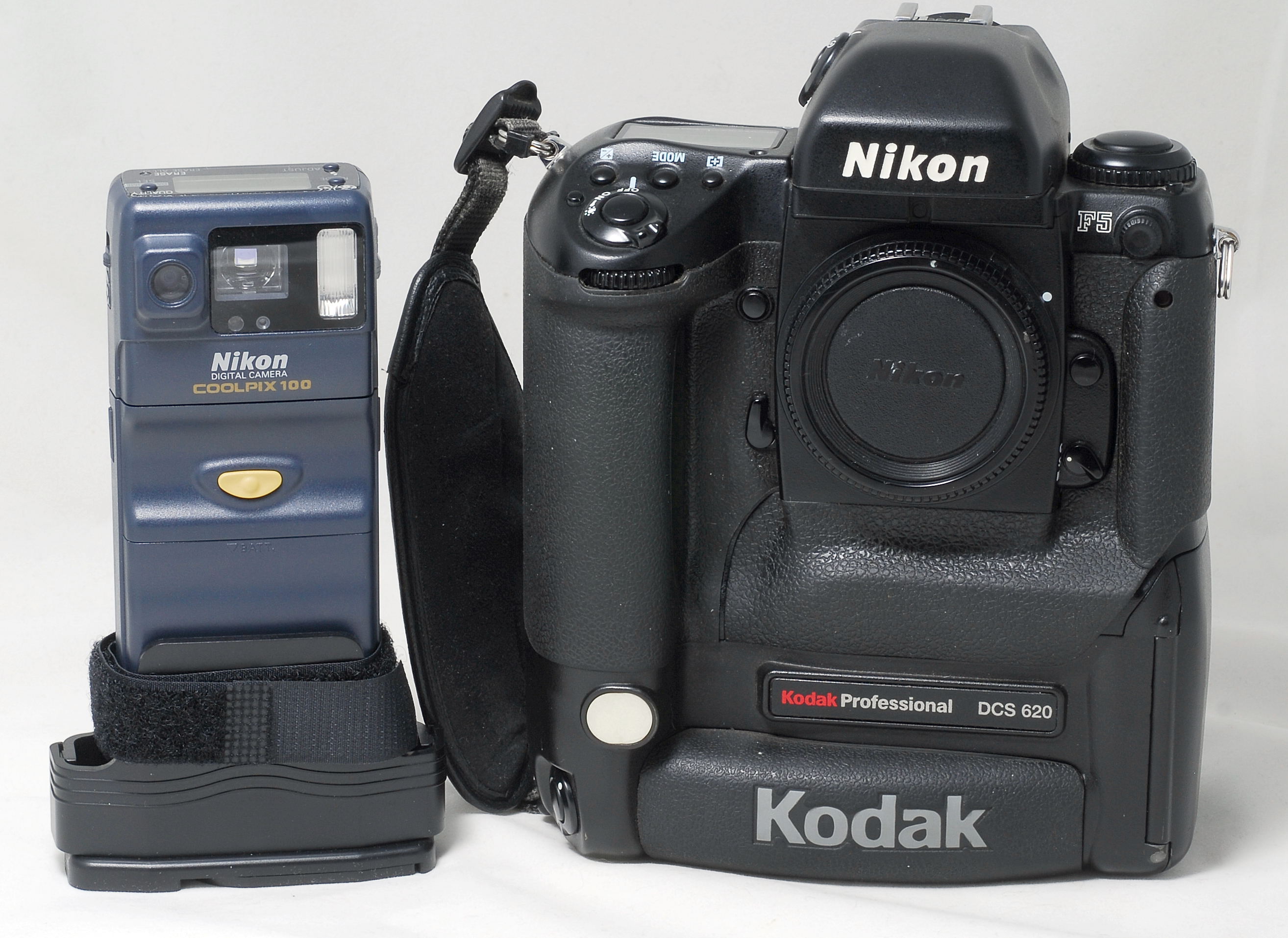History of digital imaging.
Left: Coolpix 100 (1997), right: Kodak DCS 620 based on Nikon F5 (1999) Most of us are used to the film introduced in 1889 by Thomas Alva Edison and George Eastman. Capturing images on a film or glass plate with a sensitive layer, that - after a chemical process - delivers an image that can be ‘transmitted’ via a second chemical process on paper, started early 19th century by pioneers like Nièpce, Talbot, Daguerre and many others. Around 100
years ago some scientists were trying to find another way of capturing
images on other media than the abovementioned film. We all know the American film actor and singer Bing Crosby. His live performance in a military camp on January 13, 1951 was recorded on a VTR and was broadcasted on TV one week later. Recording and broadcasting live and/or later became such a success, that Crosby set up his own Bing Crosby Laboratories, financing a research team, headed by John Mullin. By the development of the computer, where information is converted by a binary system, information supplied by scanned micro-photo-cells or charged coupled devices (CCD) can be converted in digital impulses. Around 1980 the cathode ray tube (CRT), used in TV-cameras, was replaced by a CCD-sensor. Sony and Matsushita are the frontrunner's here. The NASA played an important role in the development of digital imaging, too. Texas Instruments
patented in 1972 a ‘filmless’ camera and in August 1981
Sony introduced the very first digital photo-camera - called ‘still
camera’ - the Sony Mavica. Images were recorded/captured on a
CCD, transmitted to a diskette, which could be read in a CD-ROM player,
connected to a TV-set or printer. Many among us think this wasn’t
the first digital photo-camera but a video-camera that could make ‘stills’.
Nevertheless Sony was the first with a serial produced digital camera. Sensor types. A CCD is a sensor type with a small plate on which millions of light sensitive cells (aka photo-diodes or semi-conductors or pixels) are placed, that issue a charge as soon as they catch light. As all cells are impervious to colours, on each cell a Bayer filter (named after the Kodak engineer Bryce Bayer) for each main colour (red, green and blue) is placed. The charge of a cell is passed to the neighbouring cell and read at the sensor’s edge and converted to digital impulses.
Both sensors
are used in Nikon digital cameras and are delivering images of an outstanding
quality. Nikon introduced with the Nikon D2H its own sensor, which we have not seen later again (for whatever reason!). This JFET-LBCAST (Junction Field Effect Transistor - Lateral Buried Charge Accumulator and Sensoring Transistor) has cells that are read individually. Other manufacturers
are producing their own sensor types, like Sigma (Foveon
sensor) and Fuji (Super-CCD). * PAL
(Phase Alternation Line) TV-system is used in Europe mainly, although
the French - of course! - invented and applying their own system,
which is used in some East-European and African countries as well.:
SECAM (= Séquentiel Couleur à Mémoire).
The Americans developed a system according to the National Television
Standards Committee (NTSC), in Europe nicknamed:
‘Never The Same Colour’. PAL - on the other hand - is
nicknamed by the Americans as ‘Picture Always Lousy’.
SECAM is scoffed at as ‘System Essentially Contrary to American
Method’.
|
